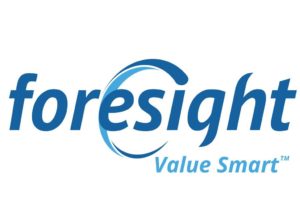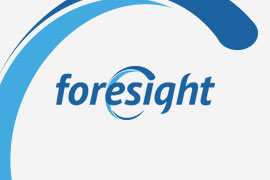 Guest blog by: Eduardo Sanchez
Guest blog by: Eduardo Sanchez
In a previous post I wrote this as my closing paragraph:
“An alternative scenario where return is maximized by selling parts of the Nortel portfolio to different bidders is feasible. If indeed this is the case, it will be a sad indicator that IP is not seen as of yet, and is not employed as the truly strategic asset that it has become. The result will be to leave the bidders all equally vulnerable and condemning them to continue to live in the “visible and vulnerable” glass house where patents are acquired to ensure immunity from lawsuits, in a permanent state of fear. Why? In the words of Mark Blaxhill and Ralph Eckardt “because companies that live in glass houses, should not throw stones.”
The reality has proven far more incredible than any fiction or fantasy. According to a CNN report “Apple takes the patents wars seriously. Google not so much” where in turn Mark Stephens writing on his blog “The enemy of my enemy” is quoted as assigning the following break down for the sum paid by each of the members of the winning consortia:
· RIM and Ericsson paid $ 1 Billion:
o Ericsson gets a fully paid license to the portfolio
o RIM gets a paid-up license plus possibly some carry forward net operating losses (NOL) from Nortel.
· Microsoft and Sony paid $ 1 Billion:
o Microsoft already had a license to the Nortel Patents.
· EMC paid $400 Million:
o EMC gets the sole ownership of a subset of the patents (allegedly in storage technology)
· Apple paid $2 billion:
o Apple gets outright ownership of Nortel’s LTE Portfolio (and some Android related ones)
I have plotted on the IP/Product Matrix the net gain in IP strength the successful bidders and members of the “Rock Star Bid Co” that won the patent auction.
Figure 1 shows yellow and red arrows next to the companies that made up the winning consortium. The arrows show the individual net gain for each company on its IP, sales-power dimensions, or both, as a result of their successful acquisition of the Nortel Portfolio. This includes Apple, RIM, Ericsson, and Microsoft. Microsoft in particular was initially only “rumored” to participate in the bid. EMC and Sony were not mentioned much, that is why I show their arrows as red.
In summary, while the Apple-led consortium won the patent portfolio, each member will reap benefits unequally, in a way that aligns with either the strategic nature of their vision, the tactical approach to the bidding, or both. Apple, with the outright acquisition of LTE (or Long Term Evolution) patents, has, overnight, gained a strong foothold IP-position in what is expected to be the wireless network technology standard for the next decade (which is what Google was hoping to do). This also signals a potential reduction in future royalties that Apple would have had to pay per handset to third parties. Were the $2 billion invested justified? It made business sense to Apple, apparently.
For Microsoft, who already had licenses to Nortel’s patent portfolio, the decision was as strategic – not to lose rights to the patents while still having leverage – as it was tactical: collaborate with rivals / competitors to enable its own business and that of its partners (Nokia’s in particular). This leaves Samsung in a more precarious situation too.
The net result is that Apple and EMC have significantly enhanced their IP positions, while Microsoft has reasserted its rights at a minimal cost, and by doing so, helped its ecosystem. All others will benefit, but as all other members of the consortium in the glass house quadrant, their drive to compete for sales/products could again bring them in a collision course (ie, litigation) with their allies of today. For some of these companies, the acquisition was driven by fear as much as by business needs. There is already talk of Google suing, for example.
For sure history has been made, and at a $4.5 billion price tag, there is a clear message that developing IP in-house, managing it, and asserting its value to capitalize on it by collaborating through licensing, not bartering IP, should be the “new” trend in IP markets.
Microsoft played and assumed the role that I had originally suggested / predicted Intel would have played. I may be off the mark here, but this might indicate a “slight” bias to thinking in mainly “software terms” and not hardware by most players in this transaction, i.e., Seeing things through an “Android-lens” only by most players, specially Google.
As I already stated, they all now benefit from this acquisition. But would they equally benefit in the market going forward? I predict that they will each benefit in a different way, and here are a few comments regarding the matter.
Google: the original “stalking horse” is now left vulnerable relative to the “strength” the others have gained with the purchase. Given Apple’s (and Microsoft’s) role leading the consortium, it is not hard to see that Google’s “Android” ecosystem was a driver to purchase the portfolio.
Google is to be praised for, in spite of having the cash, not pursuing the patent portfolio at all cost. A futile endeavor. It simply did not make business sense at $4.5 billion. This is not only responsible, it is a statement, albeit silent, to the move Sony, Apple, Microsoft, RIM, and EMC made by forming a consortium aimed at defeating Google’s plans.
The report by Mr. Stephens and CNN show that Google may not have been serious about winning the bid after it realized all his rivals were against it. Some accused them of not being serious at all; I am not sure that is a fair statement. After all, losing the bid to an entity named “Rockstars Bid Co” at over $4 billion is no joke!
Still, had Google been thinking more strategically and with a bit more business sense, beyond Android, as some of the other bidders executives and boards were doing individually, they could have approached the opportunity differently. For example, placing an initial lower bid, or not making one at all and let others show their cards first; or simply let go of its fears and try, as Apple did, to collaborate with its rivals.
Intel: did not win the auction because its management simply did not think the portfolio was worth US$4.5 Billion. This is consistent with Intel’s approach to business.
Intel just paid US$1.4 Billion for Infineon’s wireless business unit. Almost concurrently, Intel also purchased MacAfee for $7.68 billion, a 60% premium over McAfee’s share price of $29.93 at the time, according to the New York Times. Intel’s cash reserves then were US$12.2 Billion, leaving ~ US$ 3 billion in cash. Infineon’s acquisition was finalized in January. The McAfee acquisition was finalized this past February. You can read a good insight on this strategy of acquiring these two companies here.
Clearly, buying the Nortel portfolio made sense for Intel, and was consistent with its business plan, but not if overpriced. Intel still benefits as it has historically collaborated with its customers and suppliers, some of which are in the winning consortium. Intel’s customers and partners have enabled themselves, EMC for example (Nokia by proxy via Microsoft).
There are speculations that Intel might have kept on bidding; it sounds possible, but given Intel’s recent acquisition history the price tag may have been too high to make a business case.
What about the rest?
EMC: was not mentioned as potential bidder, but it is no secret that Pat Gelsinger, COO for EMC’s Information Structure Products, and former Intel Exec, and first ever CTO at that company, is helping lead EMC’s growth, and understands the value of IP. With a solid business model and ever increasing sales, this is a great strategic move for them. EMC and Intel have had a long-standing alliance as explained on EMC’s site here.
Many people ask why did EMC get involved? When half of the company is run by Pat Gelsinger, an Intel veteran, who played a key role in Intel’s then “emerging computing, networking, and communications products and technologies ” (when he was CTO, according to his biography ) it is not a stretch of the imagination to think an executive with his background would understand how crucial it would be for EMC to be a strong IP player. He certainly would have been at least one of a few executives at EMC urging their board to make a move on the Nortel Patent auction.
RPX and IV: Not much to comment. When it comes to IP strategic decisions the boards of the big high tech players like to be in full control of their IP assets and decision making, as it should be. They simply cannot outsource protection of all their IP.
RIM , Apple and Ericsson: all hoped to strengthen their position and now are moving further into the Glass House Quadrant of the IP Marketplace. With Apple initially having a generally weak position in wireless, Ericsson wanting to bolster its IP portfolio, and RIM also trying to do the same for its products and technology. All three achieved it. ZTE could have been a formidable competitor for Ericsson if the entire portfolio had gone to them, but it was effectively shut off.
· Sony’s participation was unexpected but not when one considers that Sony-Ericsson manufactures handsets, for example… Sony also competes in gaming, against Microsoft.
· Microsoft. Makes perfect sense for them to have played such a role, they are collaborating with the rest and the net result will be more licensing and more business. Their collaboration with Nokia is greatly enhanced with this acquisition.
Next? As the positions of all the players in this auction have shifted, we should get ready for more IP wars in the near future. As the tremors of the new order reach others that so far have chosen to remain silent, or simply sit it out and wait for things to settle, new lines are being drawn. The rivals can all see through each others glass walls. In particular, strong LTE players will be looking through Apple’s glass walls now. Among them one will find the likes of Interdigital and Qualcomm, straight from the Shark Quadrant.
More about Eduardo


